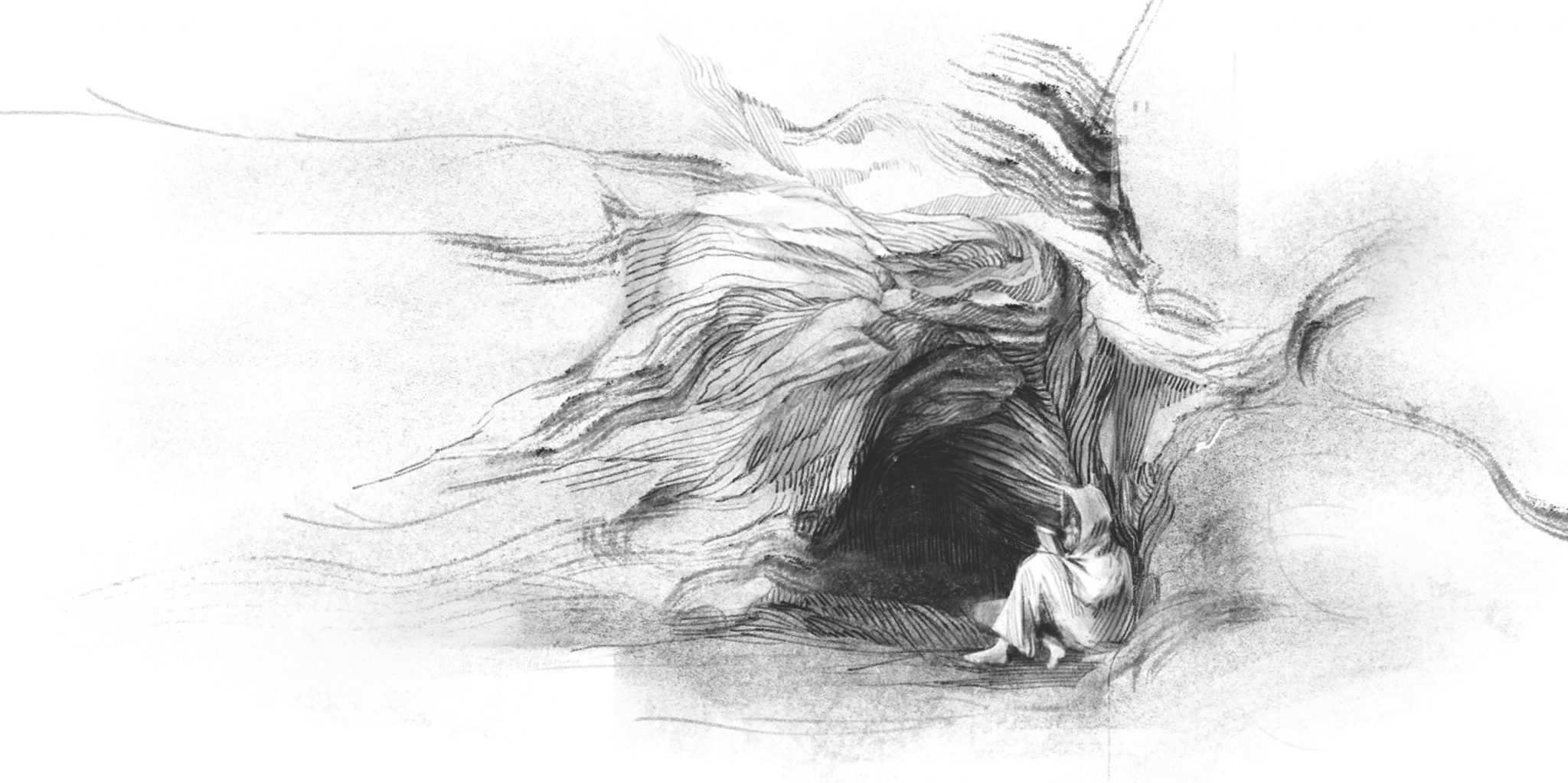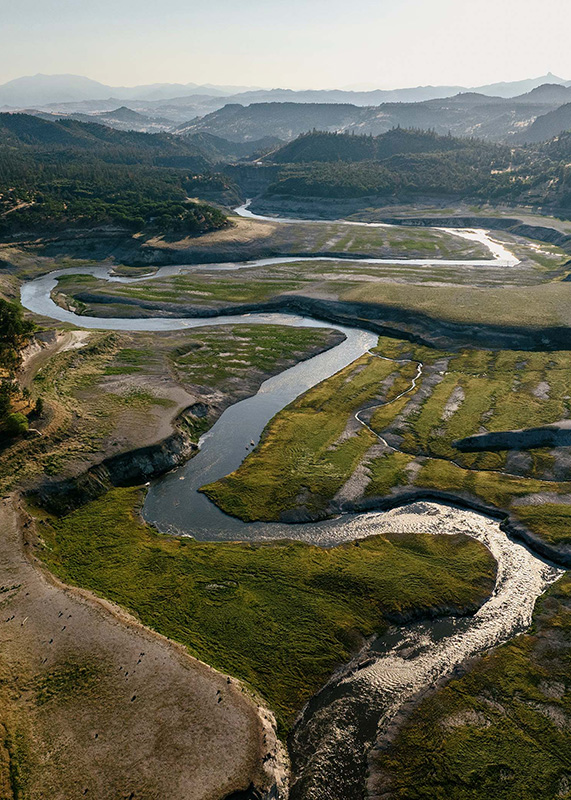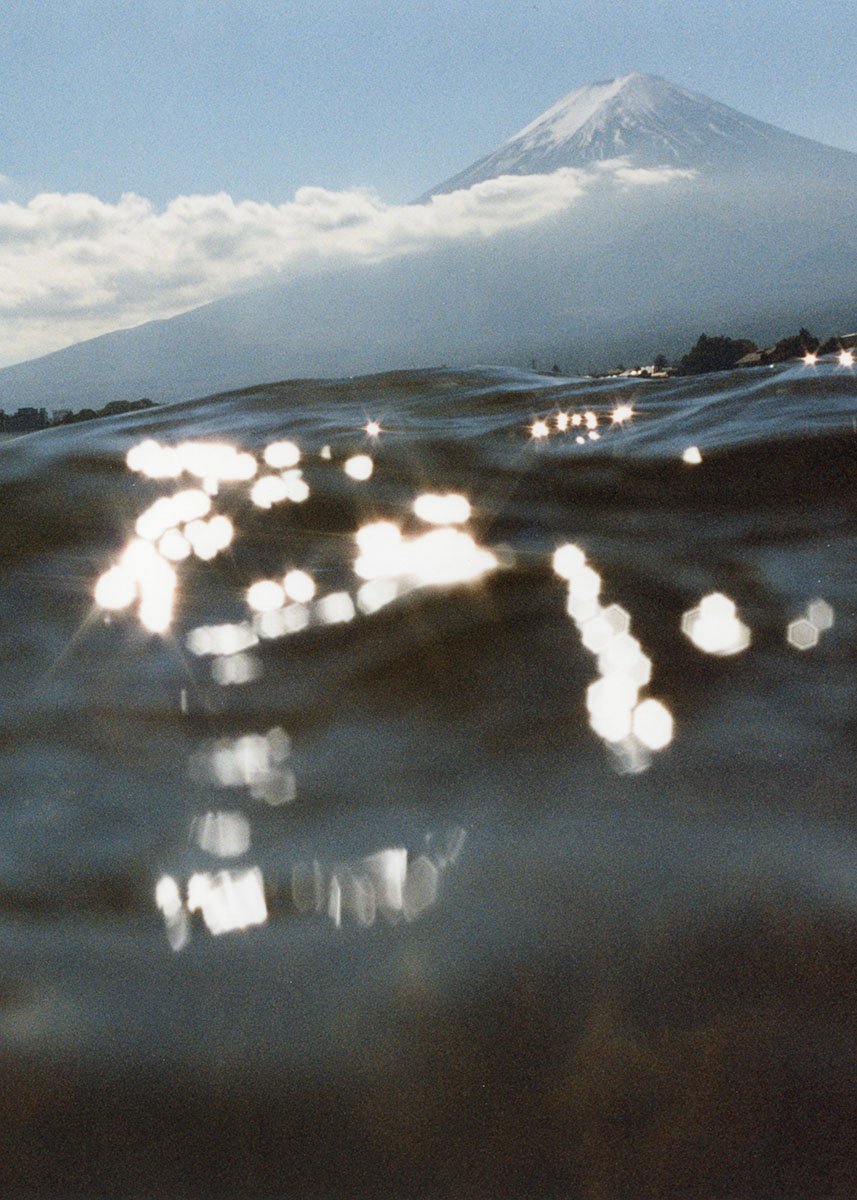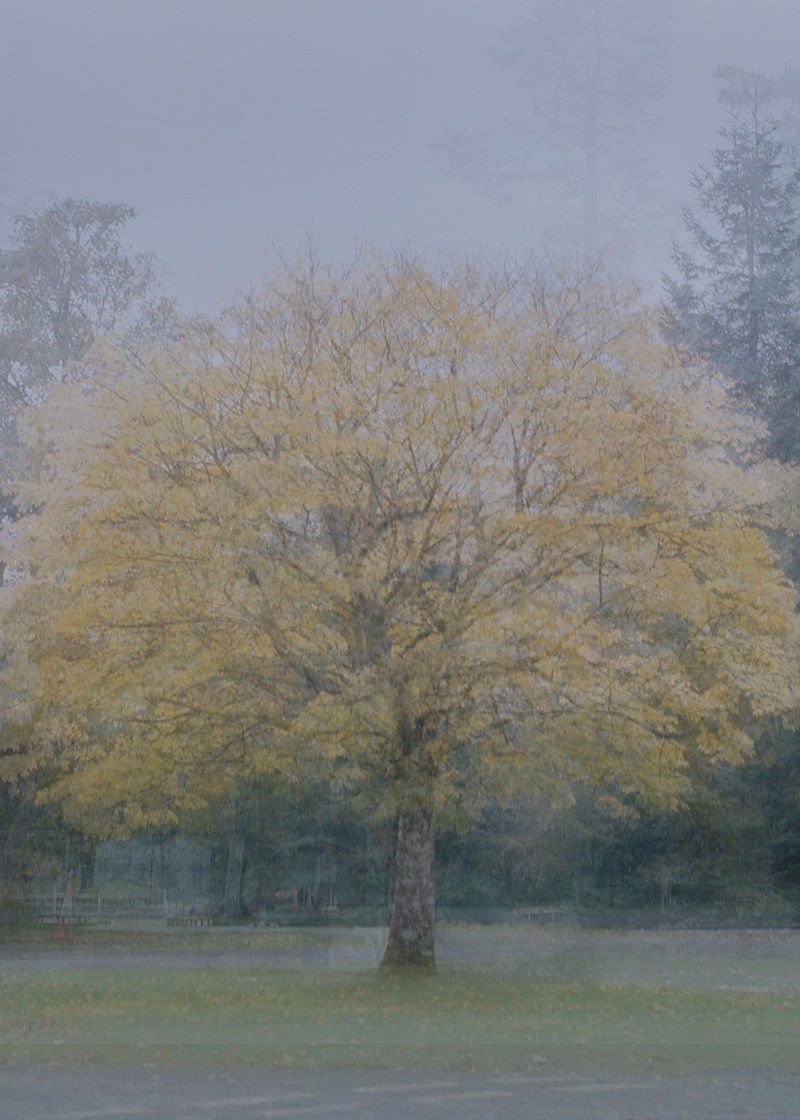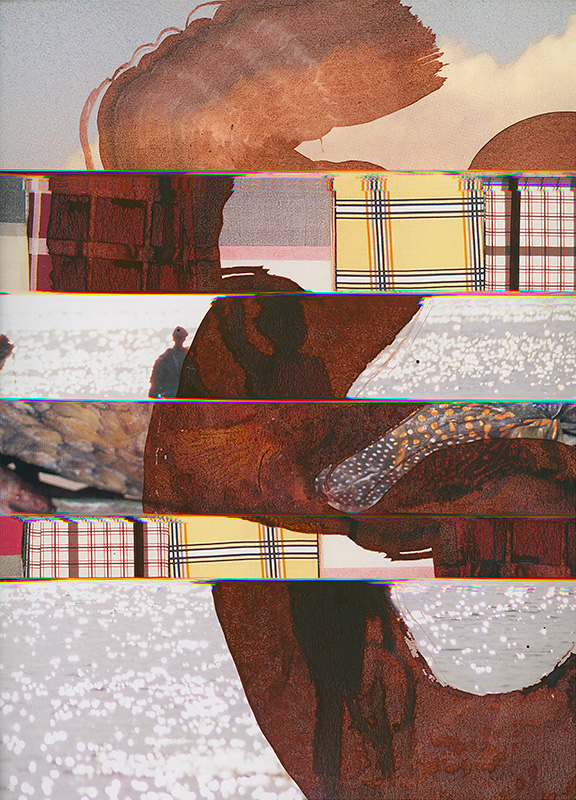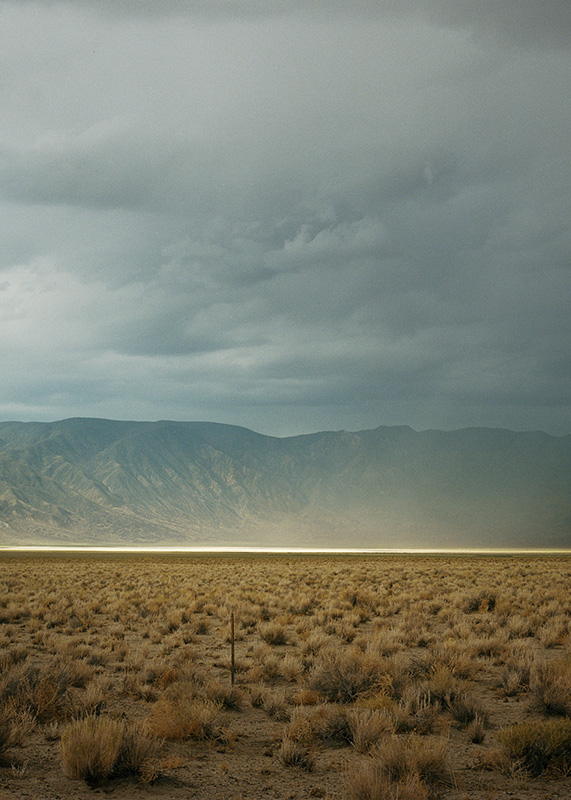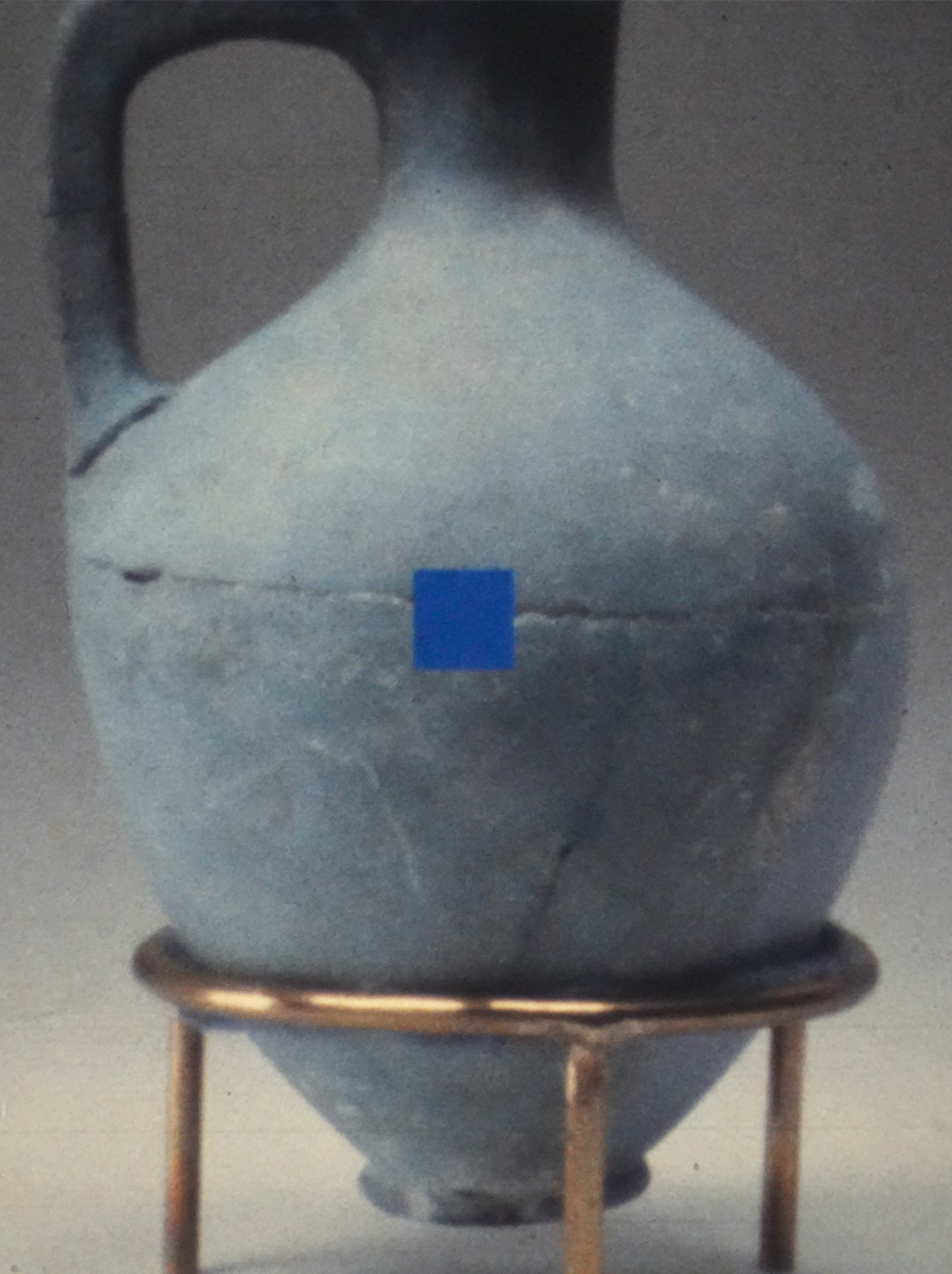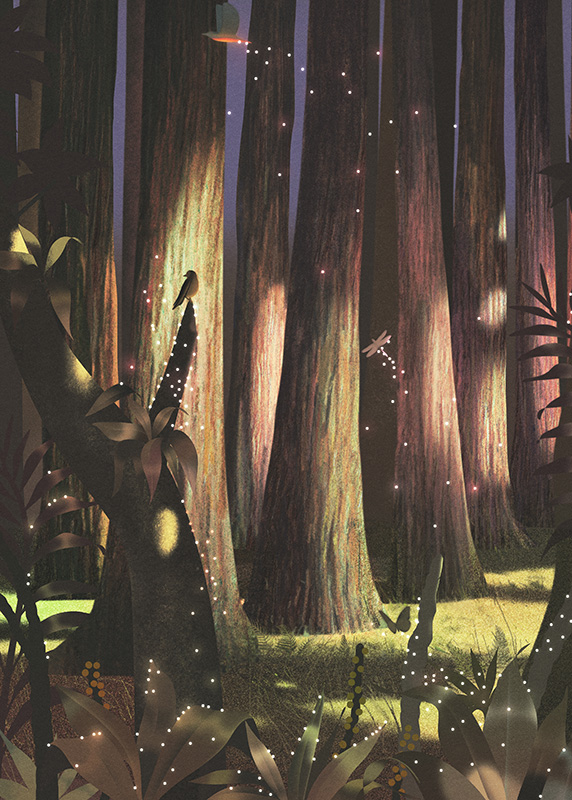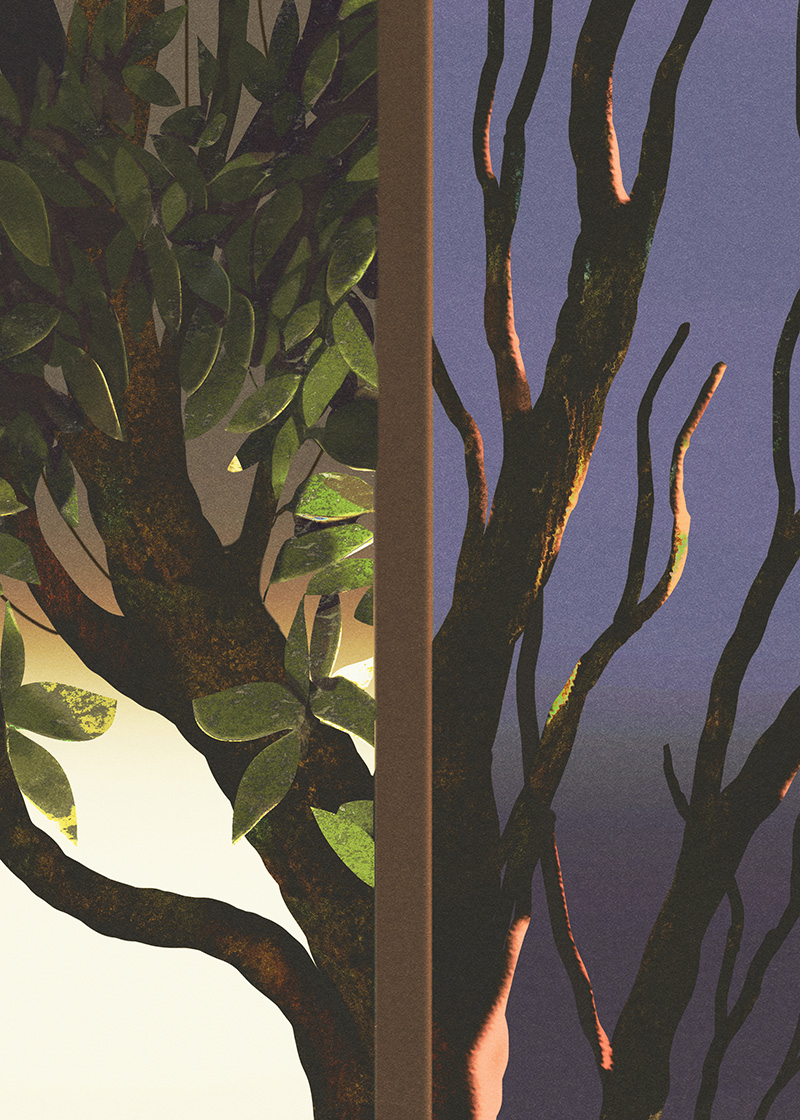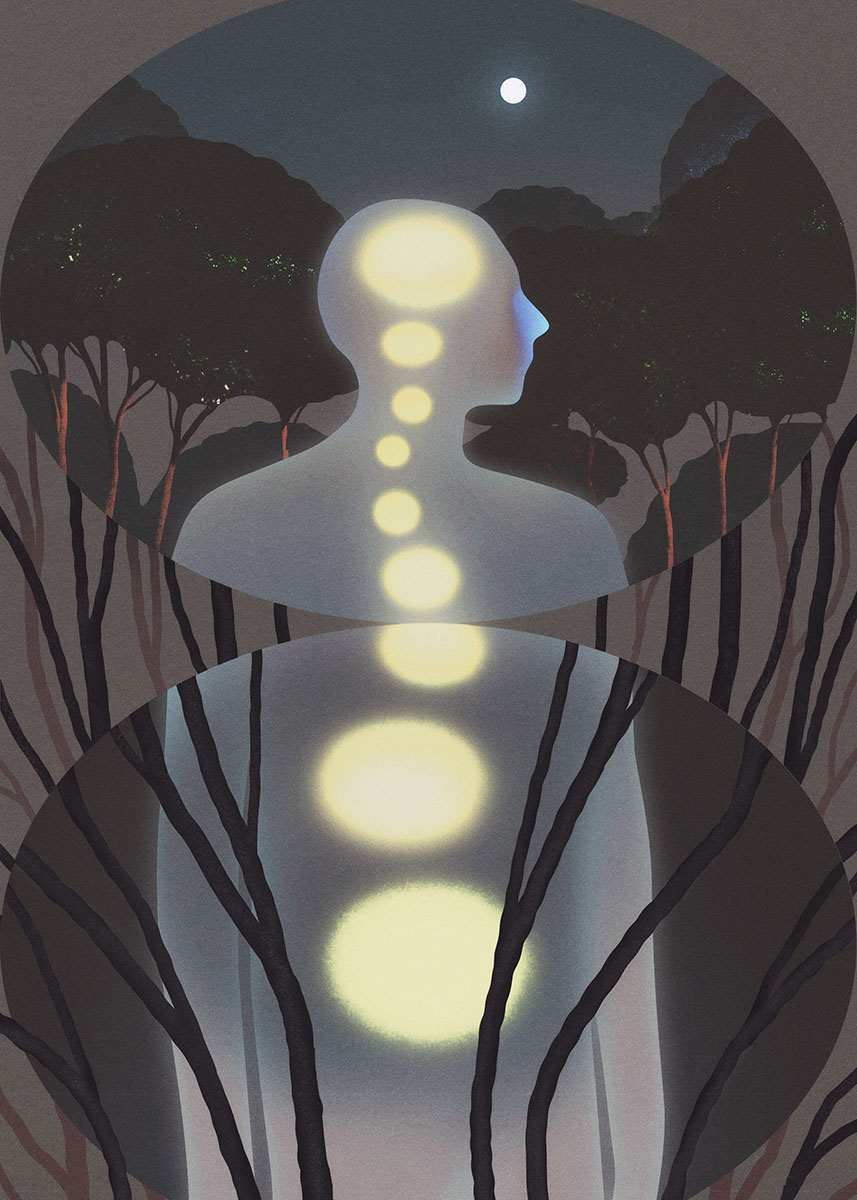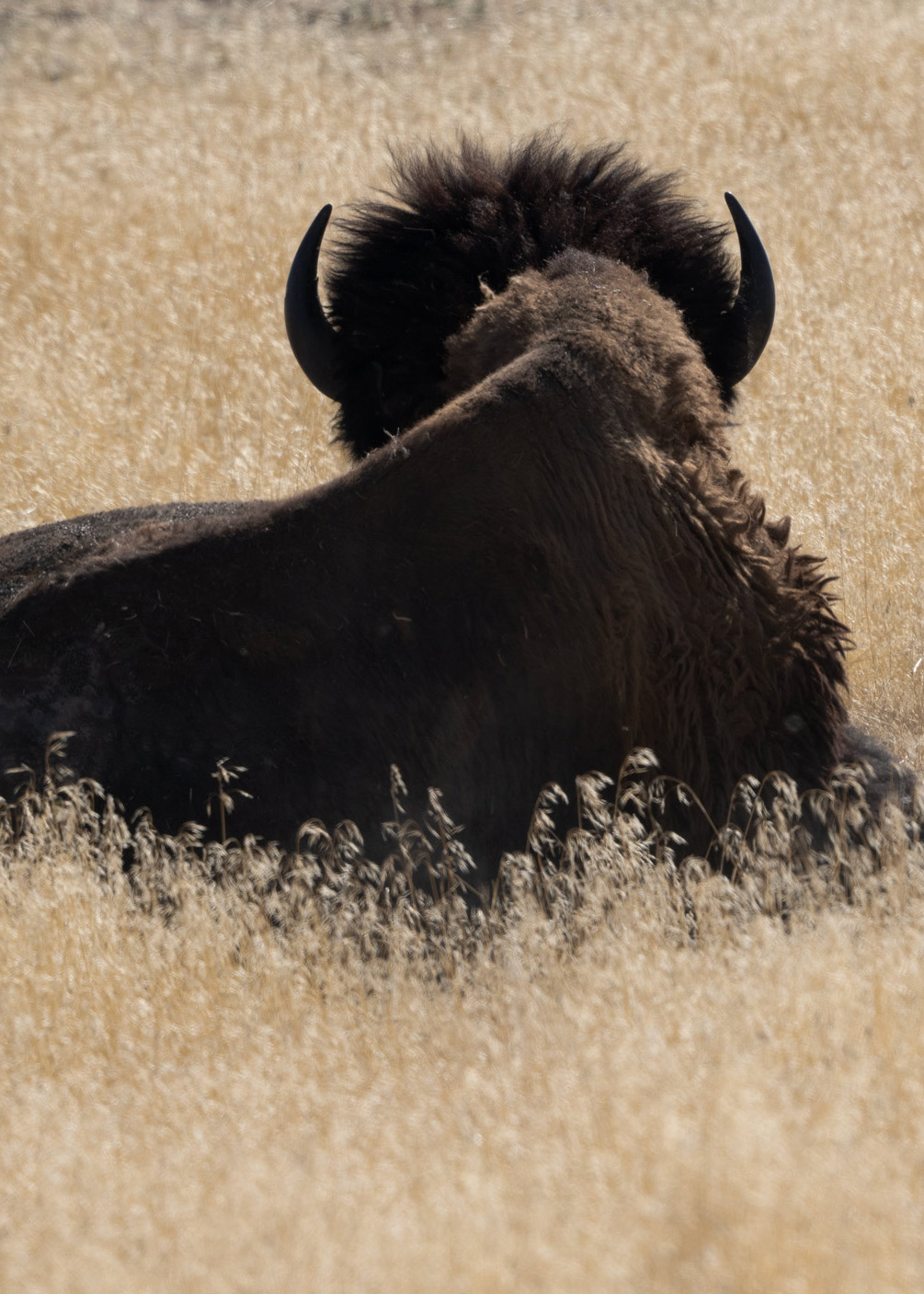
Fred Bahnson is the author of Soil and Sacrament, and his essays have appeared in Harper’s, The Sun, Orion, Oxford American, and Best American Spiritual Writing. His essay “On the Road with Thomas Merton,” originally published in Emergence Magazine, was selected by Robert MacFarlane for Best American Travel Writing 2020. He is a recipient of a W.K. Kellogg Food and Society Fellowship, a North Carolina Artist Fellowship, and a Terry Tempest Williams Fellowship for Land and Justice at the Mesa Refuge. He lives with his family in southwestern Montana.
James Lee Chiahan is a Taiwanese-Canadian artist and graphic designer. He is interested in creating images that recall moments in everyday life that are deeply affecting but difficult to explain. His clients include The Marshall Project, The California Sunday, and The On Being Project. He is currently based in Montreal, Canada.
In pursuit of a contemplative inner life amid a world in upheaval, Fred Bahnson meditates on maintaining an attentive heart.
1.
On this late October morning, when I climb the stairs to begin my morning practice, I look out my office window to see, in midflight, a covey of Hungarian partridges. The huns, as they are called here in Montana, have flown down from an adjoining wheat field, on a small rise to the north. On the ground lies ten inches of new snow. After a series of short flights, the huns flit and hop across the snow, finally alighting on the lee side of a retaining wall, where they gather into a loose, familial cluster. One by one they burrow down into the snow to make small concavities, little cells open to the sky. Earlier this summer I counted ten of them. Today only eight. The temperature hovers in the single digits, and the next few nights are expected to dip well below zero. I wonder how they will fare this coming winter.
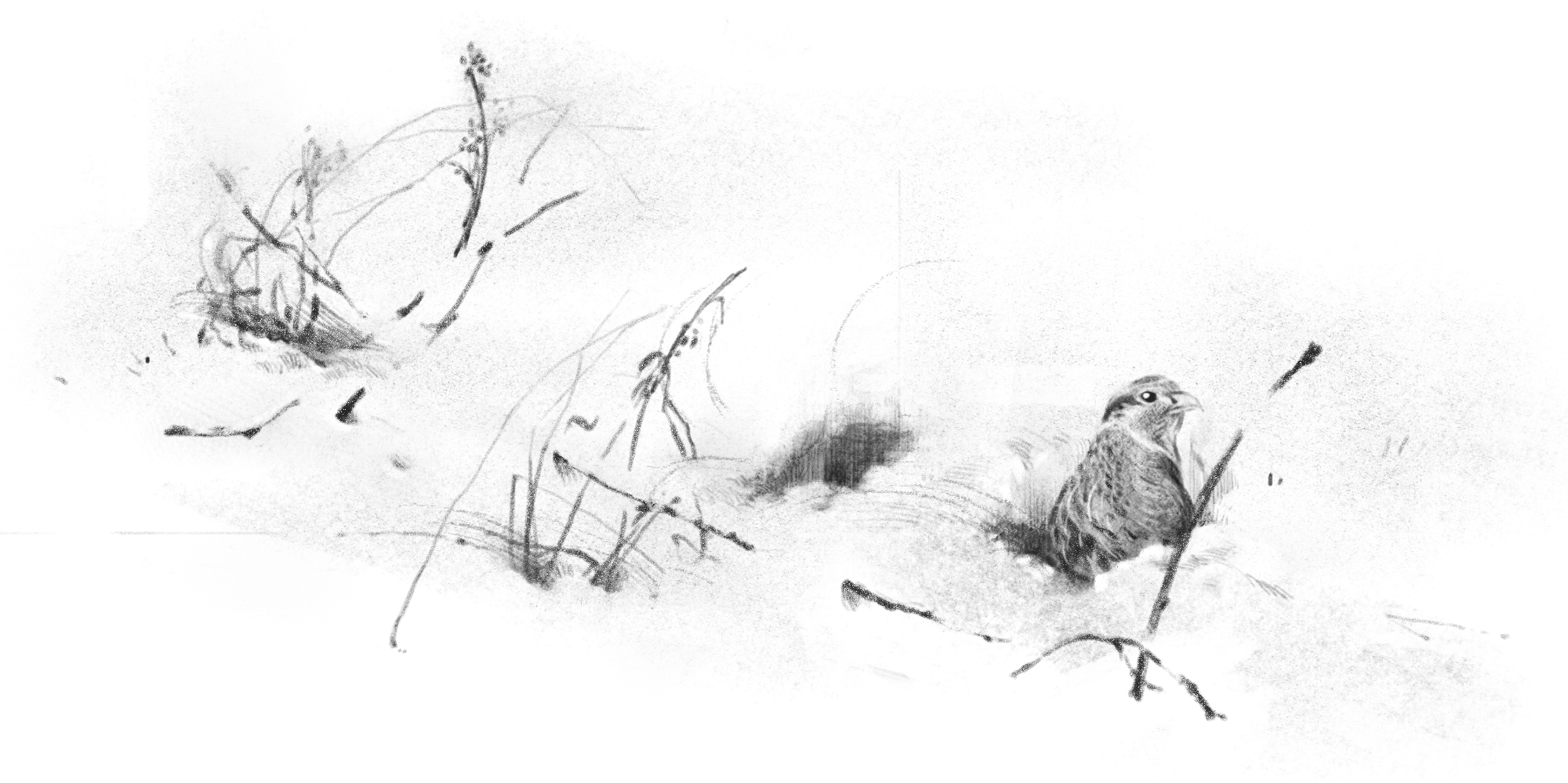
2.
Most mornings I rise early, before my sons. In warmer months I haul my zafu and zabuton onto the tiny wooden deck cantilevered over the garage roof, a crow’s nest for one, and begin my practice, but this late October snowstorm has forced me inside. Now I sit before my office’s east-facing window and watch the huns. After a time, I pick up a wooden mallet, ring the singing bowl three times, for the Trinity, and begin. Be still. Follow the breath. Slide thumb and forefinger over a woolen bead, then another, and another. Recite the mantra. Sometimes I daydream. Sometimes I watch the sun climb over Saddle Peak to the east. Sometimes I weep. In wildfire season, which in Montana began in August this year and lasted until these recent snows, I watch smoke billow up from the tail end of the Bridger Range, just a few miles south of Saddle Peak, wondering if the microparticles entering my lungs are from that fire, or from fires raging in Oregon, or Idaho, or California—wondering if I should be outside at all—and think how fraught the act of breathing has become for so many of us now, and what if … stop. I’m having thoughts, I remind myself. You are more than your thoughts. Return to the breath. Take refuge in the mantra. Silently repeat the words recited since at least the third century: Kyrie eleison (Lord, have mercy). Though I don’t know Greek, I like the strange poetry of the phrase, the way it returns my mind to the object—or Subject—of my attention.
3.
“The mind is always on the move,” wrote John Cassian, a fifth-century monk who chronicled the rise of Christian monasticism in his book The Conferences. Flitting for years across the Levant and North Africa, Cassian was a body on the move, traveling as both reporter and phenomenologist of the inner life. He sought out those familial clusters of monks who had burrowed into the desert sands of North Africa to live out their days in contemplative prayer, their lives open to the sky.
Cassian’s single-minded pursuit was to understand the practice of contemplatio, “the gaze turned in the direction of the things of God.” He wanted to know how one initiated such a gaze, what experiences it produced, how one stayed there without distraction. The trick was to outfox the mind, “a dilettante and speedy taster of spiritual ideas rather than their creator and possessor … pulled, like a drunk, in every direction.”
Anchoring the mind through contemplation was for those early Christian monks the practice, but the goal—the one thing needful around which the entire scaffolding of monastic life was built—was focused on a different organ of perception. When Cassian and his friend Germanus began their contemplative sojourn through Egypt, they stopped first at the cell of Abba Moses, a former highway robber turned monk to whom many of the early desert sayings are attributed. “Every art and discipline is preceded by some objective,” Abba Moses told them. “Our objective is puritas cordis: purity of heart.” Or as he later described it, “a heart kept free of all disturbance.”
After talking late into the night, Cassian and Germanus stretch out on the floor of Abba Moses’s cell, resting their heads on bundles of papyrus, which, Cassian reports, also serve as low seats for the brethren when they gather in assembly. They sleep. At dawn, the three monks arise in the adobe cell and, as I imagine it, resume sitting on their bundles of papyrus. A light breeze enters the lone window. The desert air quivers. Abba Moses coughs, scratches a dry shin. At last he speaks.
“I see you are fired by a very great longing,” Abba Moses says.
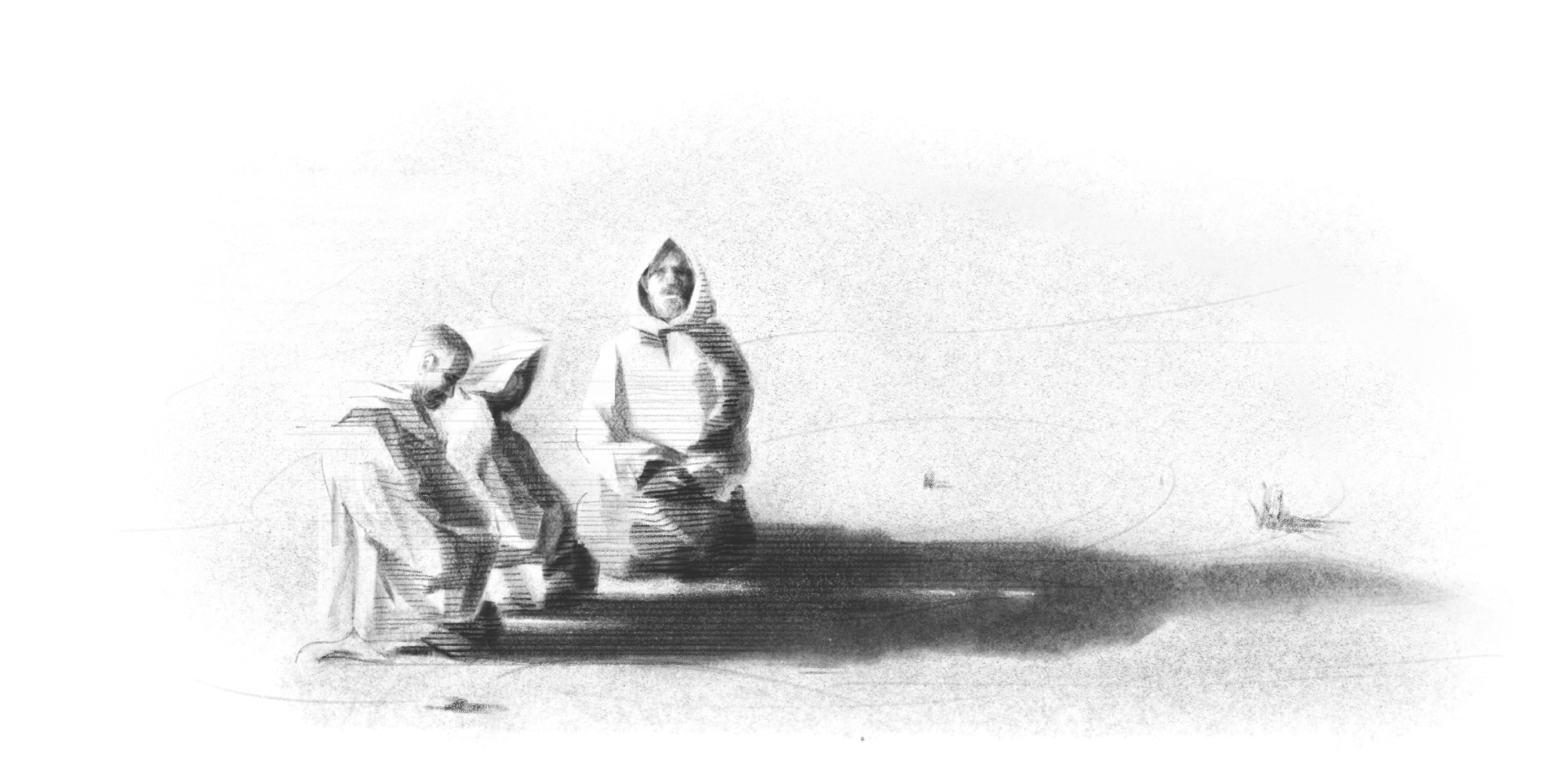
4.
All my life I’ve felt it, am forever on the watch for it in others, this very great longing.
On retreat once at Gethsemani Abbey, a Trappist monastery deep in the woods of Kentucky, I happened upon a tiny woodland shack, a prayer cell for one. I stepped inside. The walls were festooned with all the trappings of Catholic kitsch: rosaries, crosses, faded-brown laminated wallet photos of the Sacred Heart. What most caught my eye were the handwritten notes. As I looked closer, I realized the notes—hundreds, maybe thousands of them—were handwritten prayers. Jotted hastily on scraps of cheap notebook paper, scrawled in magic marker on the ceiling, written in calligraphy on heavy bond paper and placed lovingly on the desk, scratched with a pocketknife into the floorboards, stuffed into walls and ceiling. They were everywhere, these prayers. A Wailing Wall in the woods of Kentucky. I sat for hours reading them, each prayer a little story.
Pray for my dog Touchdown.
Pray for my son Andrew who is dealing with drug and alcohol addition (sic).
Lord, help me build a hermitage in my heart. And then meet me there. May it be a place that I visit often.
At the beginning of my retreat I attended all seven of the daily services at the monastery, where the monks intoned their solemnities, but as the week progressed my chapel attendance dwindled, then stopped. I preferred instead to come here, to sit in silence in this geocache of prayers, this seedbank of petitions, this tiny house of longing.
5.
Another early morning in late October: minus fifteen degrees. The huns begin their flight from the hilltop. As they burrow down in the snow in front of my window, I settle into my practice but soon find myself stealing glimpses. How I love to watch them dig their cells out in the snowy field. In these moments I long for solidity, for a place to burrow down beyond reach of ruin, for a heart kept free of all disturbance.
Disturbance seems constant now, and everywhere at once. How to describe this time when the world has slipped its moorings? Democracy fragile and cracking, a global pandemic that could well be the first of more to come, a warming world. It feels as if we are living amid a great unraveling, a time when our lives are being stripped and harrowed over and over. Humanity has been kicked out of the nest of the Holocene, where we’ve evolved over the past ten thousand years, and though some say we’ve begun the Anthropocene, I tend to favor E. O. Wilson’s locution: the Eremocene, the Age of Loneliness. In the midst of so much coming apart, I wonder, where is home? Where is our unshakable core, that place beyond which no harm can reach?
It is from this place of both need and hunger that I’ve turned to the early desert contemplatives, to what John Cassian calls “the sublime teaching of the anchorites.”
Anchorite: from the Greek anachōrētēs, “one who has withdrawn.”
I’m attracted to Cassian’s writings and the work of other early monastics because they reveal parallels between the era of the desert fathers and our own; they, too, lived during a time when the known world was coming unhinged. In 313 CE, when the Roman emperor Constantine declared Christianity the official religion of the Roman Empire, thereby marking the beginning of Christendom, men and women of conscience knew that the wedding of church and state was not a betrothal: it was a betrayal. The early anchorites withdrew from this arranged marriage because they knew that Christendom could no longer sustain their inner lives, that civilization had in fact gone mad. They left the cities and withdrew to the Egyptian desert, where the vastness of their spiritual hunger could be met by an equally vast landscape.
6.
Many years ago, while driving over Healy Pass on Ireland’s remote Beara Peninsula, I saw an anchorite among the crags. We’d come up the coast road, my wife and sons and I, in our rental van. After a pub lunch of seafood chowder and Guinness and a full day of winding, single-lane roads along the Beara headlands, I had that blurry, submerged feeling of being too long on holiday. It was late in the day, I remember, by the time we crested Healy Pass. A treeless crag of wind and stone. Light rain blew across the windshield. As soon as we began descending, I saw him.
Clad in a dirty, blue anorak, he stood alone among a group of whitewashed, life-sized statues: Jesus on the cross, the three women kneeling beneath him, their heads bowed in sorrowful reverence—an Irish Golgotha. I slowed the van so I could get a better look. The man seemed to sway for a moment. Then he closed his eyes, his brow furrowed in effort. Raising both hands, he placed them on the statue. His mouth opened, as if to speak, but then he was gone from view. Cars piling up behind us, kids tetchy and tired, I eased off the brake, rounded the next corner, and started the long descent down Healy Pass.
A few hours later, down on the coast road, I asked a local proprietor about this man. “He goes there to pray,” the shop owner said, matter-of-factly.
“What does he pray for?” I asked
“For the peace of the world.”
No matter the weather, the man spends each day praying among the crags and statues. Before he leaves the house, his wife packs him a sandwich.
It surprises me now that I never stopped the car, that my glimpse of him lasted no more than mere seconds. I was transfixed by this man, hoping perhaps that his gestures might yield up some forgotten secret, something important I would need for the rest of my life. And yet, what could I really know of this man? We lived in two parallel geographies, me in the romantic world of coast roads and vacation rentals and pub lunches, he in the self-imposed solitude of ascetical loneliness and spiritual ardor. I think often of this man, of his perseverance on Healy Pass.
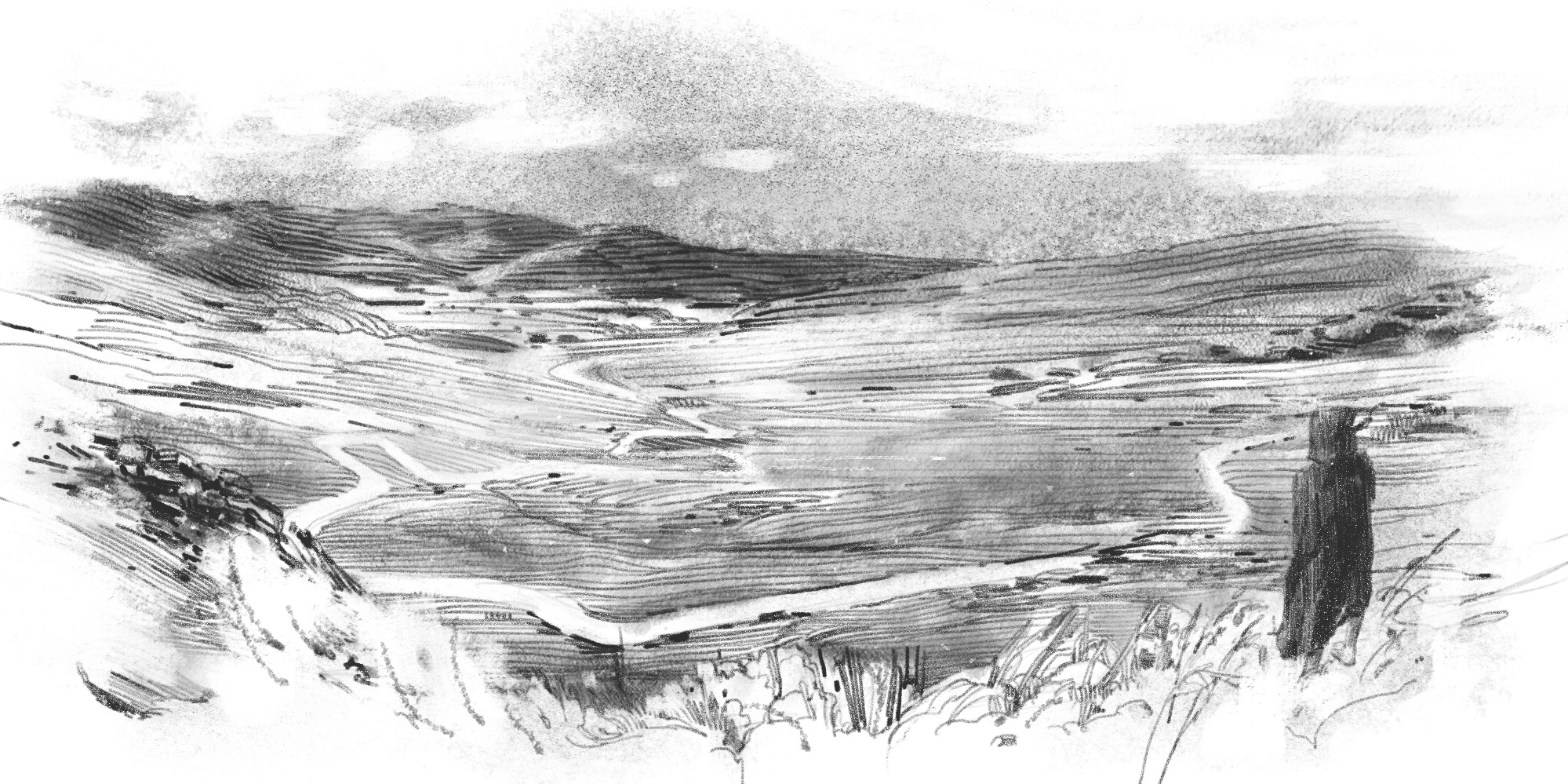
7.
The early monks withdrew to the desert in order to train the full power of their attention on puritas cordis, a heart kept free of all disturbance. For the anchorite, the act of burrowing down into the concavity of the self becomes not so much a withdrawal as a fierce struggle for freedom. It becomes a battle against turning into the very forces that threaten us, an engagement of the highest level. To practice anachorēsis doesn’t require us to become monks or even to leave home; it simply requires us, in certain moments each day, to redirect our gaze. Those brief moments when we glimpse singleness of heart can add up to hours, days, months of our lives, until they become one continuous flow, which is to say, they become our life.
Or so I’ve read in the sublime teaching of the anchorites.
8.
A flurry of brown arises outside the window. The huns have taken wing. A large mule deer buck, his neck engorged from the fall rut and whiskers bristling with hoar frost, trots over to the now empty cells. He sniffs the concavities in the snow, digs a hoof down over and over until he reaches grass, nibbles, then saunters off. I hope the huns find shelter.
Thoughts coming, thoughts going. Return to the mantra. Kyrie eleison.
How distracted I’ve been this year, really these past four years. Hatred and violence have metastasized—against people of color, against climate science, against basic human dignity, the daily assaults often initiated by an autocratic ruler holding the highest office in the land. How to prevent that toxic brew from taking up residence in our inner landscape? Fight injustice we must but on very different terms, lest we become the chaos we oppose. And yet how very difficult it is to achieve this reordering of desire, this inner watchfulness. The early monks knew this struggle well.
When Cassian and Germanus visit the cell of Abba Isaac, Germanus describes to him how they have tried, and failed, to direct their yearning. “Here is what happens. When our thoughts slip away from spiritual contemplation and run here and there, we turn to ourselves as though coming from a sleep of forgetfulness. We wake up and look for the formula by which to revive our vanished spiritual thinking.” They ask Abba Isaac to teach them a mantra, “one to which the wandering mind could return after many wanderings and various travels, one that the mind could enter, as into a haven of peace after long shipwreck.” The mantra Abba Isaac teaches them is a line from the Psalms: “Come to my help, O God; Lord, hurry to my rescue.”
My mind wanders often during these morning sits. I recite my mantra, follow my breath, but my thoughts keep returning to whatever election news I read on my phone, which, even knowing I shouldn’t, I check compulsively as soon as I awake.
The mantra serves as an anchor for the attention, but it’s no magical talisman. As Abba Isaac tells Cassian and Germanus, even those like him with a lifetime of contemplative practice must still struggle. He describes those times when he is beset by distractions: “I am in a fever as my heart moves this way and that. I have no strength to hold in check the scatterings of my thoughts. I cannot utter my prayer without interruption, without being visited by empty images and by the memory of words and doings.”
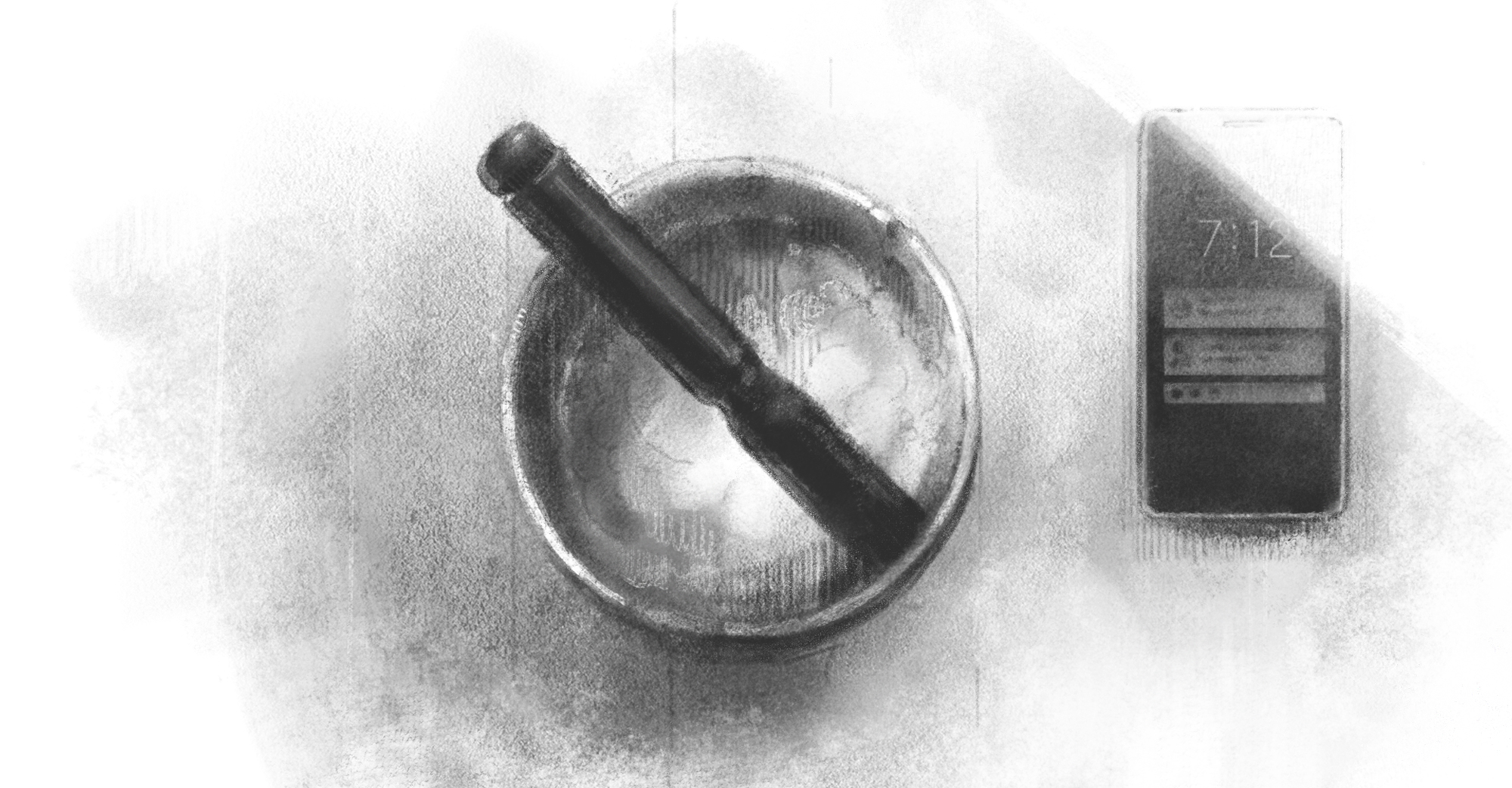
9.
I’ve been thinking about the mantra Kyrie eleison, “Lord, have mercy.” I remind myself that mercy is another word for compassion: bringing an attentive gaze to another’s suffering, offering kindness, and asking what would be of service. Attentiveness is key. The act of attending, the gift of one’s focus, leads to purity of heart. As I write these reflections, I’m conscious now of my own resistance to puritas cordis, or at least the translation. That word “purity” carries too many overtones of enforced chastity, sexual shame, “purity culture.” The early monks practiced celibacy, but their primary aim was not the containment of eros. Perhaps a better translation of puritas cordis would be singleness of heart, attentiveness of heart, the ability to hone our gaze—and thus our compassion—into a finely wrought jewel, and give it to the Other.
10.
In 394 CE, around the same time Cassian and Germanus were making their Egyptian sojourn among the desert hermits, a group of seven monks left Palestine and traveled to Egypt with a similar aim: to find and learn from those who practiced interior prayer. As a companion to The Conferences, I’ve been reading a collection of monastic stories recorded in The Lives of the Desert Fathers. Many of the tales are fantastical reports of monastic derring-do. Monks who stop the flow of rivers, or who walk across the Nile dry-shod, or who perform cures and miracles and acts of power like the apostles of old. The accounts also focus on their quiet lives of prayer, their humility, their reluctance to judge others. Also reported are the often surprising encounters these monks had with other creatures.
A certain Abba Macarius was praying in his cave when he was approached by a hyena, who began to lick his feet. Taking the hem of his garment gently between her teeth, she pulled him toward her own cave and showed him her newborn cubs. They were blind. “Macarius prayed over them,” the text reports, “and returned them to the hyena with their sight healed.” By way of thanks, the mother brought Macarius the skin of a large ram which she had killed and laid it before his feet. “He smiled at her as if at a kind and sensitive person, and taking the skin, spread it under him.” The skin, the narrator wrote, is still in possession of one of the brothers.
I love these stories, but there is one line in The Lives of the Desert Fathers to which I keep returning. In the prologue the narrator describes the generative effect the early monks had on the lives within reach of their ambit, but this line makes me think of all such people—of every tongue and tribe and tradition—who bend their lives toward prayer: “Indeed, it is clear to all who dwell there that through them the world is kept in being.”
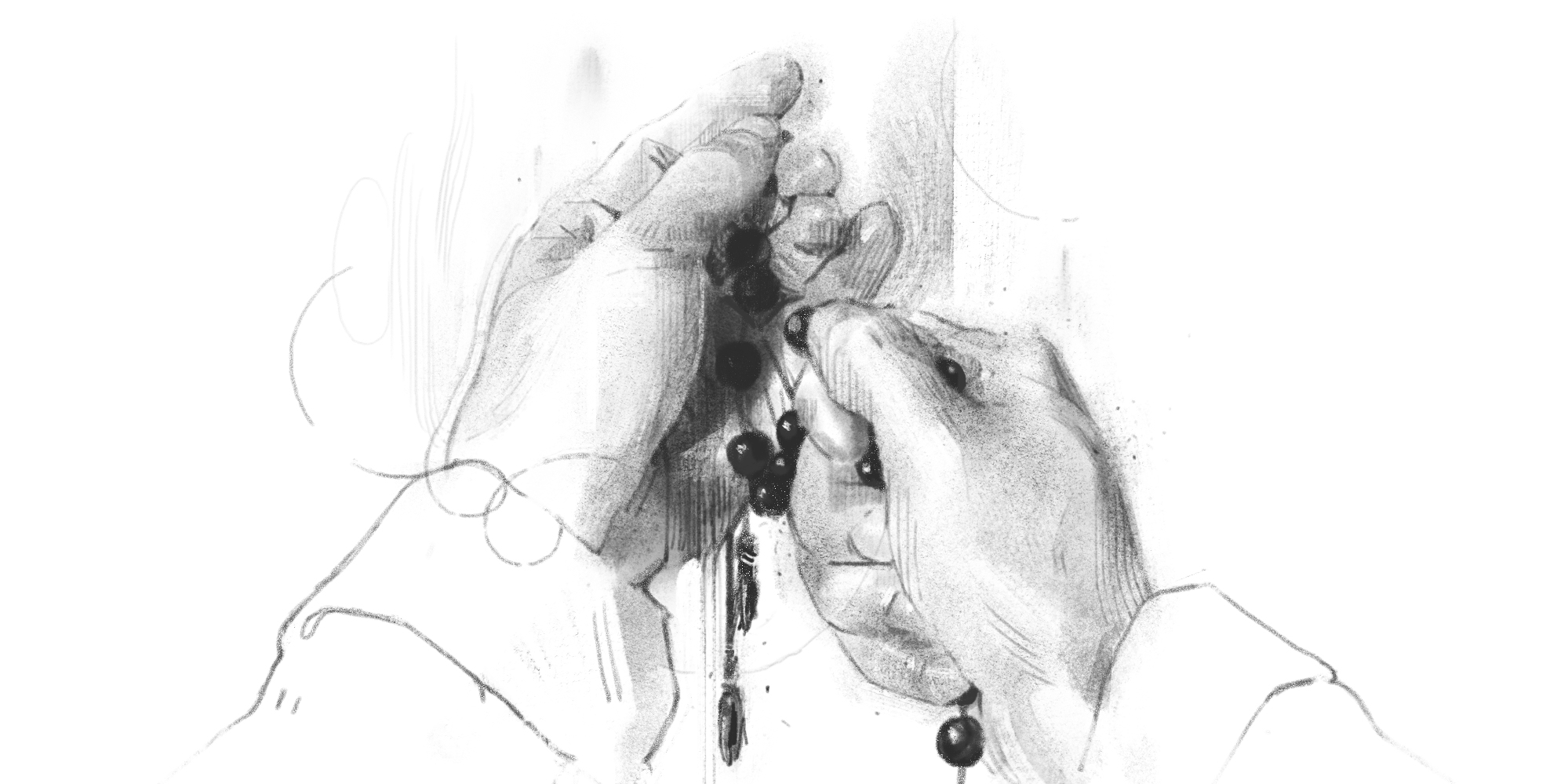
11.
After the election, results still pending, I ease my anxiety with a long trail run up Saddle Peak. Three hours of continuous movement over uneven terrain—especially the final ridge, where I scramble up a scree slope then post-hole through calf-deep snow to reach the summit—leave me properly spent. More than relief, I feel gratitude. How good it is to move my body again in the mountains, to place myself in conversation with elementals: wind, water, stone. Up near the treeline, a grouse hen flies up from underfoot, spooked from her hiding place in a stand of krummholz. I watch her descend until she merges with the forest below.
Two days later the election results are conclusive. The autocrat has been defeated. Relief. Democracy worked again. Maybe bigotry and climate denial will not be our guiding forces any longer. Much hard and necessary work went into defeating this man, and I’m reminded that in any age anachorēsis is only part of the story, that withdrawal is the spouse of action.
And yet, a gnawing worry remains. Four years of autocratic rule is not an anomaly. Such individuals grow out of a society that has lost sight of how to order a human life, that has forsaken spiritual yearning for material excess and power, and not only among those who favored the autocrat. Even among fellow progressives, I’ve seen how easy it is to become seduced by our ideals and to despair when those ideals are dashed. Political life has replaced the inner life as the arbiter of all things. Instead of cultivating discernment, watchfulness, singleness of heart—those inner disciplines that are the foundation of a healthy person and a healthy polis—many of us cast our hopes on platforms. As Cassian and the early monks knew, platforms—however noble or justified—cannot begin to satisfy the vastness of our yearning. They are a complement, not a replacement, for the work of the spirit.
12.
It’s been weeks since I’ve seen the huns. With warming temperatures down in the valley, the early snows have melted. I wonder if the partridges found shelter in the deep draw to the north, or maybe they succumbed to the low temperatures, or to a coyote’s jaws. Two days ago we had another big snowstorm, and then this morning I see them. They’re far up the draw to the east, under a stand of Siberian pea shrub, pecking at fallen seed pods. I only count five, but perhaps the others are hiding in the bush, or in their snowy cells.
Here on my cushion, I take my place among an unseen nation of contemplatives. Time or distance cannot separate us, nor can race or creed. An adobe cell in fourth-century Egypt, a prayer shack in the woods of Kentucky, an office with an east-facing window—whether on zafu or papyrus, time and place and kit are pretty much interchangeable, and irrelevant. What matters is the strength of our longing and to what ends our longing is directed. “Our objective is puritas cordis,” Abba Moses told Cassian and Germanus. A heart kept free of all disturbance. The more we cultivate such inner stability, the more we can offer our lives in service to the world. Saint Seraphim of Sarov, a nineteenth-century Russian monk who lived as a hermit deep in the woods, said, “Acquire a peaceful spirit, and thousands around you will be saved.”
When I become distraught and anxious from the venalities and injustices of our age, I remember the prayers of ordinary women and men and children left in a plywood shack in Kentucky. Help me build a hermitage in my heart. I remember the man on Healy Pass, his dirty anorak flapping in the cold wind, hands cracked and dry from exposure. I remind myself that the thing in the desert, the longing Abba Moses saw in Cassian and Germanus—that’s always been the real thing.
I see them now: the three of them sit in the adobe cell, the desert morning clear and still. In the growing silence they feel a Presence rising up within, surrounding them with unaccountable mercy. One by one they give their assent to this moment, for this is what they have sought. They join the steady, unseen work of keeping the world in being.

On the Road with Thomas Merton
In May 1968, Christian mystic Thomas Merton undertook a pilgrimage to the American West. Fifty years later, filmmaker Jeremy Seifert and writer Fred Bahnson set out to follow Merton’s path, retracing the monk’s journey across the landscape. Amid stunning backdrops of ocean, redwood, and canyon, the film features the faces and voices of people Merton encountered. The essay offers a more intimate meditation on Merton’s life and the relevance of the spiritual journey today.
